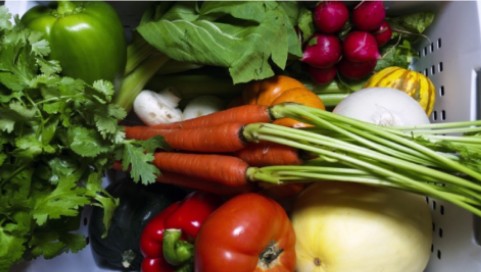Exploring Nutritious Ingredients in Gluten-Free Bread Making

Gluten-free bread, crafted from a diverse array of alternative flours and nutritious ingredients, offers not only an option for those with gluten sensitivities but also a chance to explore a broader spectrum of flavors, textures, and nutritional benefits.
This article delves into the wide array of nutritious ingredients used in Gluten Free Bread Recipe, highlighting their diverse nutritional benefits and contributions to the taste, texture, and overall healthfulness of the bread.
Nutrient-Dense Flour Alternatives:
Gluten-free bread recipes often incorporate a variety of flours to mimic the texture and taste of traditional bread. Nutrient-dense alternatives like almond flour, rich in healthy fats and protein, or coconut flour, abundant in fiber and low in carbohydrates, add depth and nutritional value to gluten-free bread.
Quinoa: A Protein-Rich Addition
The incorporation of quinoa flour into gluten-free bread not only contributes to its unique taste but also elevates its nutritional profile. Quinoa is a complete protein source, containing all nine essential amino acids, making it a valuable addition for individuals seeking plant-based protein alternatives.
Buckwheat Flour: Nutritious and Gluten-Free
Despite its name, buckwheat is not related to wheat and is naturally gluten-free. Buckwheat flour offers a robust, nutty flavor and is packed with nutrients like fiber, protein, and essential minerals, including magnesium and manganese, enhancing both taste and nutritional content in gluten-free bread.
Teff: Tiny Grain, Big Nutrition
Teff, a tiny grain originating from Ethiopia, is gaining recognition for its nutritional prowess. High in protein, fiber, and various micronutrients like calcium and iron, teff flour adds a mild, earthy flavor and a wealth of nutrients to gluten-free bread recipes.
Chia Seeds and Flaxseeds: Nutrient Powerhouses
Incorporating chia seeds or flaxseeds into gluten-free bread dough introduces an additional nutritional boost. These seeds are rich in omega-3 fatty acids, fiber, and antioxidants, offering health benefits and contributing to the texture and appearance of the bread.
Fiber-Rich Additions: Psyllium Husk and Oat Fiber
Enhancing the fiber content of gluten-free bread can be achieved by incorporating ingredients like psyllium husk or oat fiber. These additives improve texture, moisture retention, and overall nutritional content, supporting digestive health and satiety.
Seed Mixes and Nut Blends:
Creating a diverse seed mix or incorporating chopped nuts into gluten-free bread adds texture, flavor, and nutritional diversity. Seeds such as sunflower, pumpkin, or sesame seeds, along with nuts like walnuts or almonds, contribute healthy fats, protein, and essential nutrients to the bread.
Fruit and Vegetable Purees for Moisture and Nutrition:
Using fruit or vegetable purees, like applesauce, mashed bananas, or pumpkin puree, not only enhances moisture and texture but also introduces natural sweetness and nutrients to gluten-free bread, reducing the need for added sugars.
Experimentation and Customization:
Gluten-free bread-making offers a realm of possibilities for experimentation and customization. Bakers can tailor recipes to suit individual preferences, exploring different flour combinations, nutrient-rich additions, and flavor profiles.
Conclusion: Nourishing Gluten-Free Bread
In conclusion, exploring nutritious ingredients in gluten-free bread-making is a gateway to creating bread that goes beyond dietary restrictions—it becomes a canvas for diverse and wholesome nutrition. By incorporating a variety of nutrient-dense flours, seeds, nuts, and fruits, gluten-free bread not only caters to specific dietary needs but also becomes a vehicle for delivering an array of essential nutrients, enhancing both taste and nutritional value.






